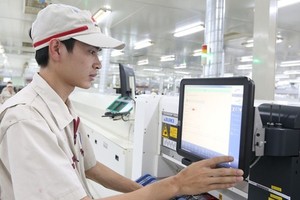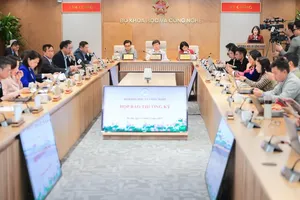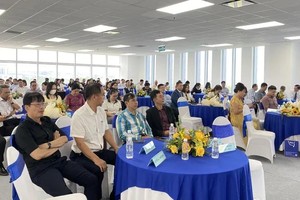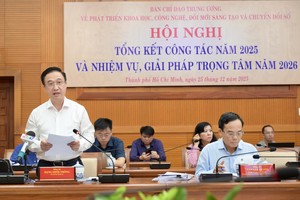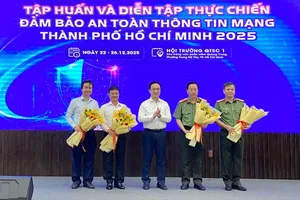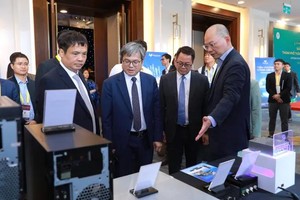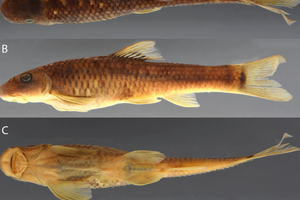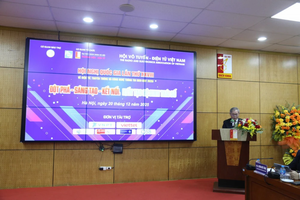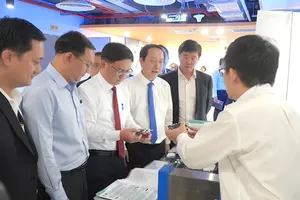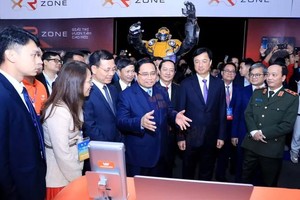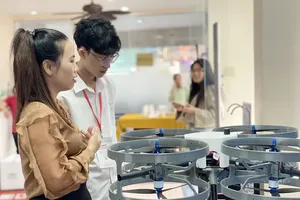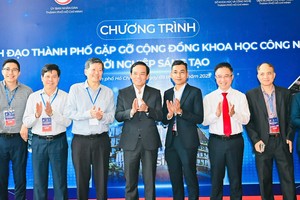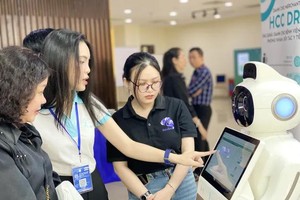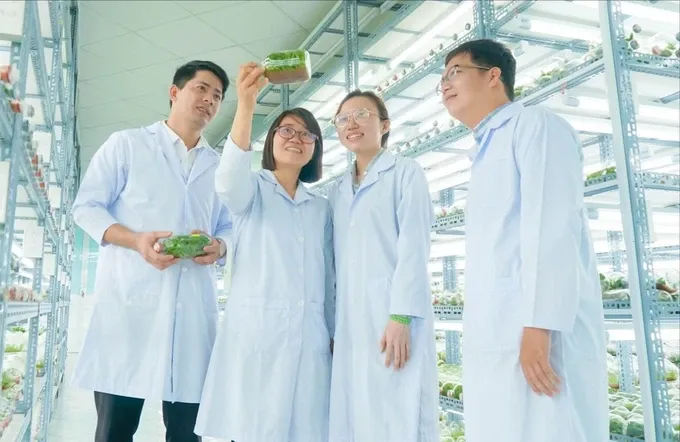
Building robust foundation from outset
In the aftermath of Southern Vietnam’s liberation and national reunification, HCMC confronted a series of formidable challenges. Yet, with foresight and strategic intent, the city identified science and technology (S&T) as the key for unlocking its developmental potential. This pivotal recognition spurred the consolidation and expansion of universities and research institutions, laying the crucial groundwork for nurturing human capital and fostering fundamental research activities.
The 1990s marked the city’s entry into an era of technical refinement and production optimization, witnessing tens of thousands of grassroots-level innovations annually. Participation in the HCMC Technical Innovation Contest surged over threefold between 1990 and 2014, escalating from a modest 60 technical solutions to an impressive 198 in the 2013-2014 cycle, peaking at an extraordinary 323 entries in 2010-2011.
Former Deputy Director Le Hoai Quoc of the HCMC Science and Technology Department emphasized the enduring and significant contributions of scientists, technical experts, and young intellectuals in driving crucial shifts in management practices and the integration of technology across HCMC’s socio-economic spheres.
During its renewal, Saigon strategically invested in IT, biotech, advanced materials, and automation. This foresight led to the birth of Quang Trung Software City (QTSC) in 2001. Attracting domestic and international IT firms with incentives and infrastructure, QTSC now hosts over 120 companies offering 650+ tech products and services for both domestic and international markets.
Established in 2002, Saigon High-Tech Park (SHTP) has become a significant attractor of international investment, a point of pride for the city. Deputy Head Le Quoc Cuong of SHTP’s Management Board noted SHTP’s impactful investment metrics: an average project capital of US$76 million, nearly ten times higher than outside SHTP.
Land investment density averages $22 million/ha for leased land, exceeding other zones. This yields a strong return, with each state Vietnamese dong generating 3 dongs after more than 20 years, and greater contributions are expected due to SHTP’s future-oriented strategies.
Embracing novel paradigms of innovation
HCMC has consistently positioned itself as the pioneer in organizing technology and equipment marketplaces. This proactive initiative, spearheaded by city leadership, dates back to 1999. These technology exchanges have played a pivotal role in fostering the creation and expansion of the S&T market, strengthening the crucial linkages between research and industry, driving economic restructuring, and enhancing overall competitiveness.
Any discussion of S&T dynamism in HCMC would be incomplete without acknowledging the invaluable human capital nurtured by its research institutes and universities, as well as strategic young cadre development programs such as initiatives to cultivate young leadership and management talent, the ambitious training program for 300-500 young master’s and doctoral degree holders. These initiatives have cultivated a robust core of skilled professionals who are currently driving innovation within the city’s S&T organizations.
Head Pham Dinh Dung of the Management Board of HCMC Agricultural Hi-tech Park (AHTP) stated that AHTP pioneers hi-tech agricultural research, talent attraction, and cadre training nationwide. Established in Cu Chi District in 2004, it incubates businesses, supports startups, and commercializes lab research, supplying millions of seedlings via tech transfer and short-term training sessions.
In recent years, the S&T landscape has witnessed a significant push towards research, transfer, and application of the transformative achievements of Industry 4.0. This drive aims to build a smart city, support the national digital transformation agenda, and foster the growth of the innovative startup ecosystem (ISE), giving rise to a new paradigm of S&T development, namely the ISE itself. Currently, HCMC’s ISE is rapidly approaching the top 100 most dynamic startup ecosystems globally.
The city has secured a place among the top 100 global cities in four key sectors: Fintech (54th), Edtech (62nd), e-commerce and retail (71st), and transportation (87th). Furthermore, HCMC leads the top 10 localities in Vietnam with the highest local innovation index, and its status as the birthplace of unicorn startups with valuations exceeding $1 billion serves as compelling real-world validation of its innovative prowess.
New momentum fueled by Resolution 57
Digital transformation has become an undeniable imperative for unlocking the next wave of value creation within S&T. With the implementation of the HCMC Digital Transformation programs and the ambitious project to transform it into a smart city by 2024, alongside the project to develop the application of the National Population Data, electronic identification and authentication for national digital transformation in the 2022-2025 period, significant strides have been made in raising public awareness and delivering tangible benefits to citizens.
Resolution 57-NQ/TW by the Politburo on December 22, 2024 on S&T innovation and digital transformation offers HCMC new opportunities for unprecedented growth. The city aims for breakthroughs and sustainable development in the digital and knowledge economies.
HCMC leaders have articulated a comprehensive “1-4-1” strategy, encompassing
- one central hub (an International Financial Center in HCMC);
- four high-priority areas: a multi-purpose high-tech center focusing on innovation, AI, GIS, and semiconductor chips; a high-tech industrial park; high-quality education; high-quality healthcare;
- one overarching strategy (strategic infrastructure development, initially prioritizing modern synchronous transport infrastructure and digital infrastructure).
HCMC swiftly acted on Resolution 57, as emphasized by Chairman Nguyen Van Duoc of the HCMC People’s Committee at the conference on March 11. The city proactively commits to reviewing and refining S&T, innovation, and digital transformation policies in 2025 and beyond. This concerted effort aims to unlock resources for double-digit growth and establish a high-tech center to improve public administration for citizens and businesses.
Building upon a robust foundation established over many years, coupled with a firm commitment to leveraging S&T for urban development, Resolution 57 presents a pivotal opportunity for HCMC to assert its position and achieve a powerful transformation in this new era. With a unified and consistent implementation strategy, the city is poised for rapid and sustainable growth, enhanced national competitiveness, and long-term socio-economic prosperity as Resolution 57 takes effect.

